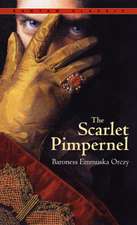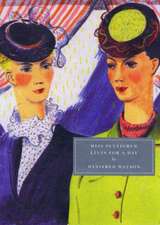Clotel
Autor William Wells Brownen Limba Engleză Paperback – 16 dec 2019
First published in December 1853, Clotel was written amid then unconfirmed rumors that Thomas Jefferson had fathered children with one of his slaves. The story begins with the auction of his mistress, here called Currer, and their two daughters, Clotel and Althesa. The Virginian who buys Clotel falls in love with her, gets her pregnant, seems to promise marriage—then sells her. Escaping from the slave dealer, Clotel returns to Virginia disguised as a white man in order to rescue her daughter, Mary, a slave in her father’s house. A fast-paced and harrowing tale of slavery and freedom, of the hypocrisies of a nation founded on democratic principles, Clotel is more than a sensationalist novel. It is a founding text of the African American novelistic tradition, a brilliantly composed and richly detailed exploration of human relations in a new world in which race is a cultural construct.
- First time in Penguin Classics
- Published in time for African-American History Month
- Includes appendices that show the different endings Brown created for the various later versions of Clotel, along with the author's narrative of his "Life and Escape," Introduction, suggested readings, and comprehensive explanatory notes
| Toate formatele și edițiile | Preț | Express |
|---|---|---|
| Paperback (5) | 65.72 lei 6-8 săpt. | |
| Penguin Books – 30 noi 2003 | 77.73 lei 3-5 săpt. | |
| Digireads.com – 16 dec 2019 | 65.72 lei 6-8 săpt. | |
| Book Jungle – 7 mai 2008 | 106.28 lei 6-8 săpt. | |
| Simon & Brown – 24 oct 2018 | 112.90 lei 38-44 zile | |
| Read & Co. Classics – 8 feb 2022 | 128.99 lei 6-8 săpt. | |
| Hardback (2) | 167.23 lei 38-44 zile | |
| Simon & Brown – 24 oct 2018 | 167.23 lei 38-44 zile | |
| Simon & Brown – 11 noi 2018 | 181.53 lei 38-44 zile |
Preț: 65.72 lei
Nou
Puncte Express: 99
Preț estimativ în valută:
12.58€ • 13.17$ • 10.41£
12.58€ • 13.17$ • 10.41£
Carte tipărită la comandă
Livrare economică 05-19 aprilie
Preluare comenzi: 021 569.72.76
Specificații
ISBN-13: 9781420965711
ISBN-10: 1420965719
Pagini: 120
Dimensiuni: 140 x 216 x 7 mm
Greutate: 0.16 kg
Editura: Digireads.com
ISBN-10: 1420965719
Pagini: 120
Dimensiuni: 140 x 216 x 7 mm
Greutate: 0.16 kg
Editura: Digireads.com
Notă biografică
William Wells Brown (1814ߝ1884) was born a slave, escaped to the North and then to England, and became one of the most prominent abolitionists of his time. During his prolific literary career, Brown was a pioneer in several different genres, including travel writing, fiction, and drama.
M. Giulia Fabi is the author of Passing and the Rise of the African American Novel. She teaches American literature at the University of Ferrara, Italy.
M. Giulia Fabi is the author of Passing and the Rise of the African American Novel. She teaches American literature at the University of Ferrara, Italy.

















![Oliver Twist [With DVD]](https://i3.books-express.ro/bt/9781589977136/oliver-twist-with-dvd.jpg)







